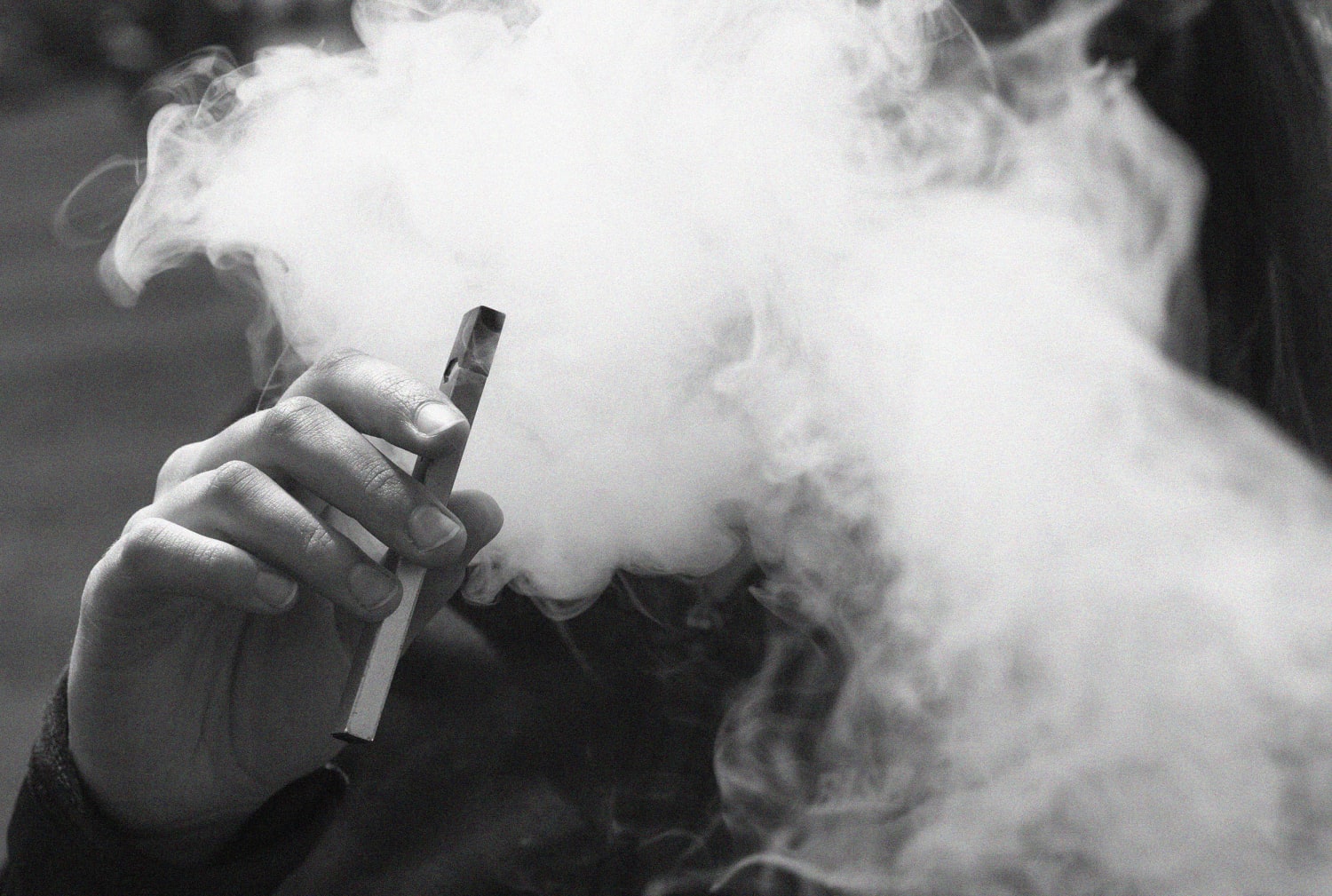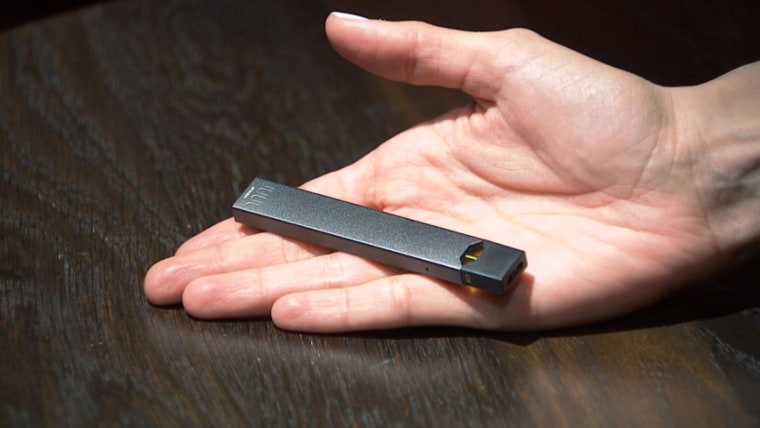Teen vaping appeared to plummet this year as many U.S. students were forced to learn from home during the pandemic, without the opportunity to congregate in school bathrooms and other campus areas, according to a government report released Thursday.
But health officials urged caution in interpreting the numbers, which were collected using an online questionnaire for the first time.
The annual report, called the National Youth Tobacco Survey, is generally conducted in schools. The latest results published by the Centers for Disease Control and Prevention may be skewed because it was conducted during the pandemic, when many students were at home, doing virtual learning.
The survey, conducted from January to May, found that 11 percent of high school students and less than 3 percent of middle school students said they were recent users of e-cigarettes and other vaping products, the CDC and the Food and Drug Administration reported.
That’s a roughly 40 percent decrease from last year, when nearly 20 percent of high school students and 5 percent of middle schoolers said they’d recently vaped.
The decrease in “the number of kids who say they use these products may well be in part because they are at home, and it may also be in part because studies done with kids in the home produce lower results,” said Matthew Myers, president of the Campaign for Tobacco-Free Kids.
That may change as students get back together, Myers said. “We have every reason to be very concerned about the impact of kids returning to school.”
Robin Koval, chief executive officer and president of Truth Initiative, a nonprofit organization that advocates for tobacco cessation, said in a statement that caution is needed to interpret the survey’s findings, which was conducted in a different manner than prior surveys. That make it “impossible to compare” to previous years.
“While the results are an important data point, it’s very important to note that this survey was conducted during the height of the pandemic while many young people were in remote school away from in-person socializing and the influence of peers, factors which drive e-cigarette use among youth,” Koval said.
A recent survey of 15- to 24-year-olds by Truth Initiative found that 70 percent of young people anticipated seeing people vape at similar or higher rates as they went back to school.
Still, other outside experts said the decrease in e-cigarette use may be real, and makes sense given that young people often vape socially.
Dr. Nancy Rigotti of Harvard University, who was not involved with the research, said “it’s hard to imagine that [the drop] doesn’t represent a real decrease in use among high school and middle school students.”
Even before the pandemic, a number of new restrictions were curtailing underage use of e-cigarettes. In late 2019, a new federal law raised the purchase age for all tobacco and vaping products from 18 to 21. Shortly afterward, the FDA banned nearly all flavors from small, cartridge-based e-cigarettes, which first sparked the teen vaping craze.
Also, some kids may have been scared off by an outbreak of vaping-related illnesses and deaths; most were tied to a filler found in black market vaping liquids that contained THC, the chemical in marijuana that makes users feel high.
For months, tobacco experts have speculated about the potential effect of school closures on vaping, given most teens vape with their friends and get e-cigarettes from their peers.
Rigotti said the decline will have to be confirmed by other surveys due out later this year. It is also hard to predict whether vaping could rebound now that most schools have returned to in-person classes.
“I’m sure schools are working hard to ensure that doesn’t happen,” she said.
Previously, the survey was conducted in classrooms. This year’s was done online, calculating responses from January through May to accommodate students both at home and in school.
Overall, government officials estimate that about 2 million U.S. teens and adolescents are vaping, a number they say is far too high. “E-cigarette use among youth remains a serious public health concern,” CDC specialist Dr. Karen Hacker said in a statement.
Thursday’s report comes as the FDA is poised to potentially place even bigger limits on the vaping industry. The agency is in the midst of a sweeping federal review to decide which e-cigarette brands and products can stay on the market, after years of regulatory delays.
Earlier this month, the agency announced a ban on thousands of products, but it has not yet ruled on a handful of major manufacturers that account for most sales, including Juul and Vuse.
The new government numbers show teen vaping habits are shifting away from those brands. The top brand cited by high schools students is a disposable e-cigarette called Puff Bar that comes in flavors such as pink lemonade, strawberry and mango.
It remains clear that flavored e-cigarette products drive teen vaping. According to the CDC report, about 85 percent of young people who said they vaped preferred sweet candy and fruit e-cigarette flavors.
In the survey, more than 15 percent had no idea what e-cigarette brand they’d been using.
Follow NBC HEALTH on Twitter & Facebook.
Source: | This article originally belongs to Nbcnews.com











